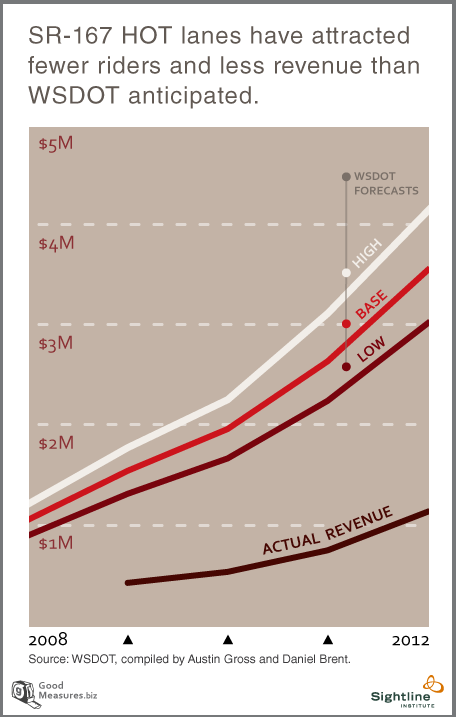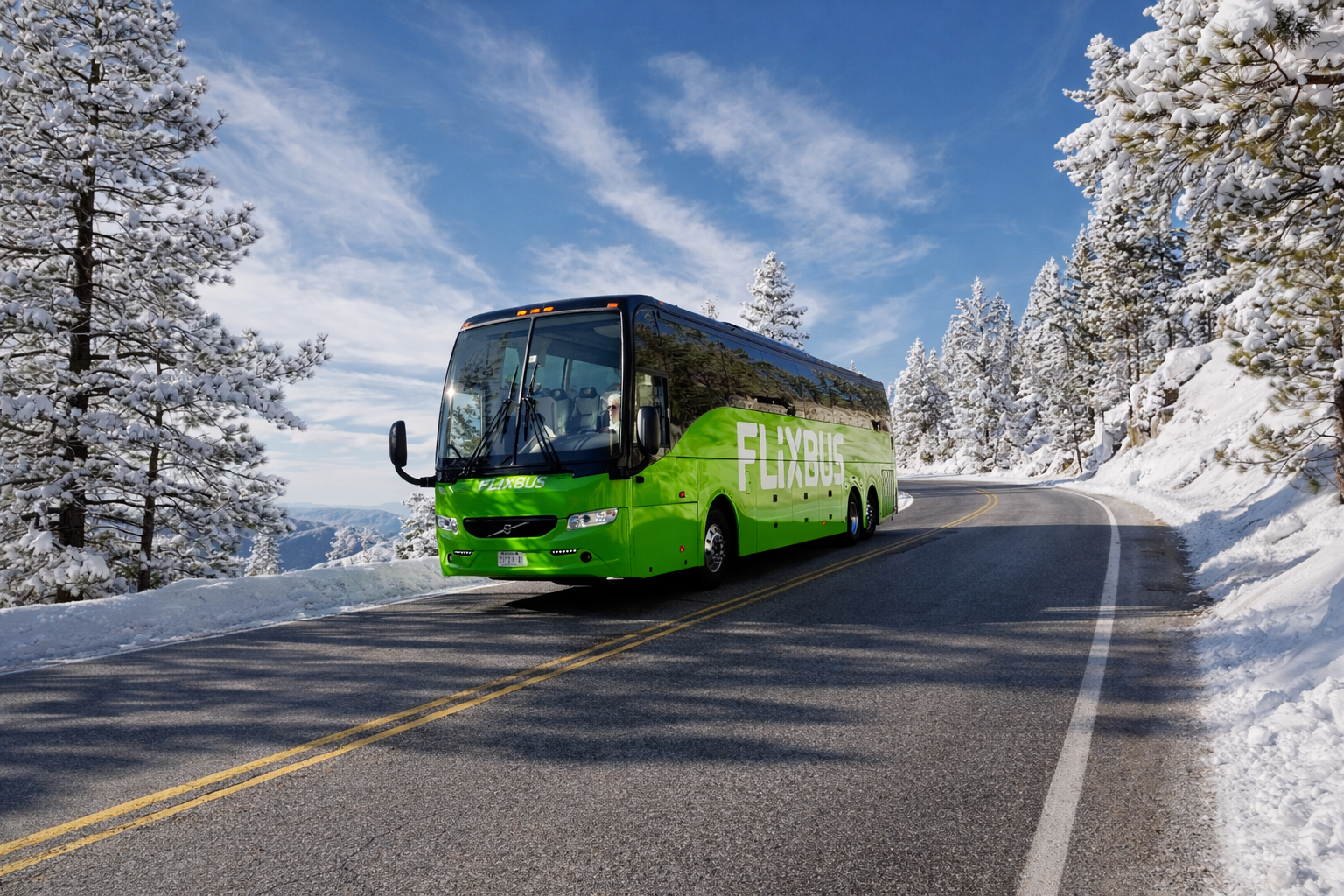A pilot project to bring high occupancy/toll lanes to State Route 167 in metro Seattle has grossly deviated from projections, raising questions about the value of added road capacity.

The 10 miles of priced lanes -- the only "HOT" lanes in the Pacific Northwest -- were converted from HOV lanes in 2008 and cost $18 million to implement. Five years later, Seattle-based sustainability think tank Sightline Institute reports that usage and toll revenue on the lanes are far lower than anticipated. Last year, the lanes collected about one-third the revenue of the most conservative predictions from the Washington Department of Transportation. The state had planned to expand "hot" lanes around the state, but the experience with SR 167 could change that, the News Tribune reports.
Two factors seem to be at play: People are driving less, and they aren't as willing to pay their way out of congestion as was assumed.
Sightline's Zachary Howard and Clark Williams-Derry report that in 2006, planners predicted that traffic on 167 would rise 2.5 percent a year. Instead, it fell three out of the following five years, including a 5 percent dip in 2008.
Less congestion means less incentive to pay for 167's HOT lanes. But there's more going on than that: Not only are fewer people choosing to use the priced lanes than expected, those who do are paying lower prices than expected. The lanes are dynamically priced, with the costs rising -- and falling -- based on demand. Sightline reports:
According to WSDOT figures for 2011, northbound drivers during peak morning hours paid an average toll of $1.75 to enter the HOT lane, saving about nine minutes in the process. Southbound evening peak-hour travelers paid $1.25 for about six minutes of time savings. Given those values, peak hour HOT lane toll payers apparently are willing to spend about $12 for every hour they save in traffic.
The prevailing theory about HOT pricing is that people would be willing to pay half their hourly wage rate to avoid sitting in traffic. But based on income data from WSDOT, far more commuters earn more than $24 per hour than are opting for the priced lanes, reports Sightline.
"Most drivers, even those from high-income households, would simply prefer to sit in traffic, rather than pay for a little speed," Howard and Williams-Derry conclude. "Which raises a question: given that drivers may not be all that willing to pay for a quicker trip, does it really make sense for taxpayers to invest so much in trying to give them what they won’t pay for themselves?"





